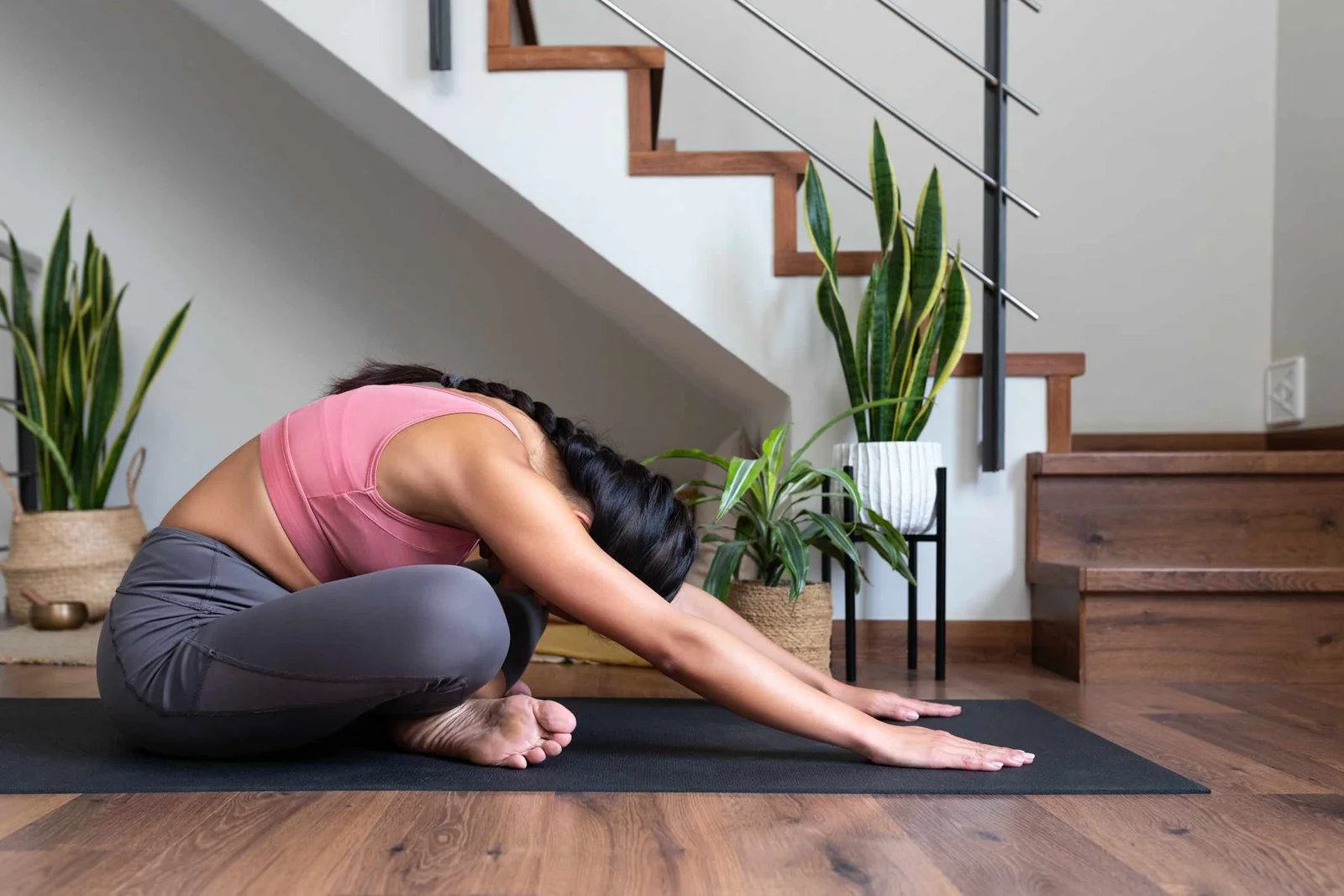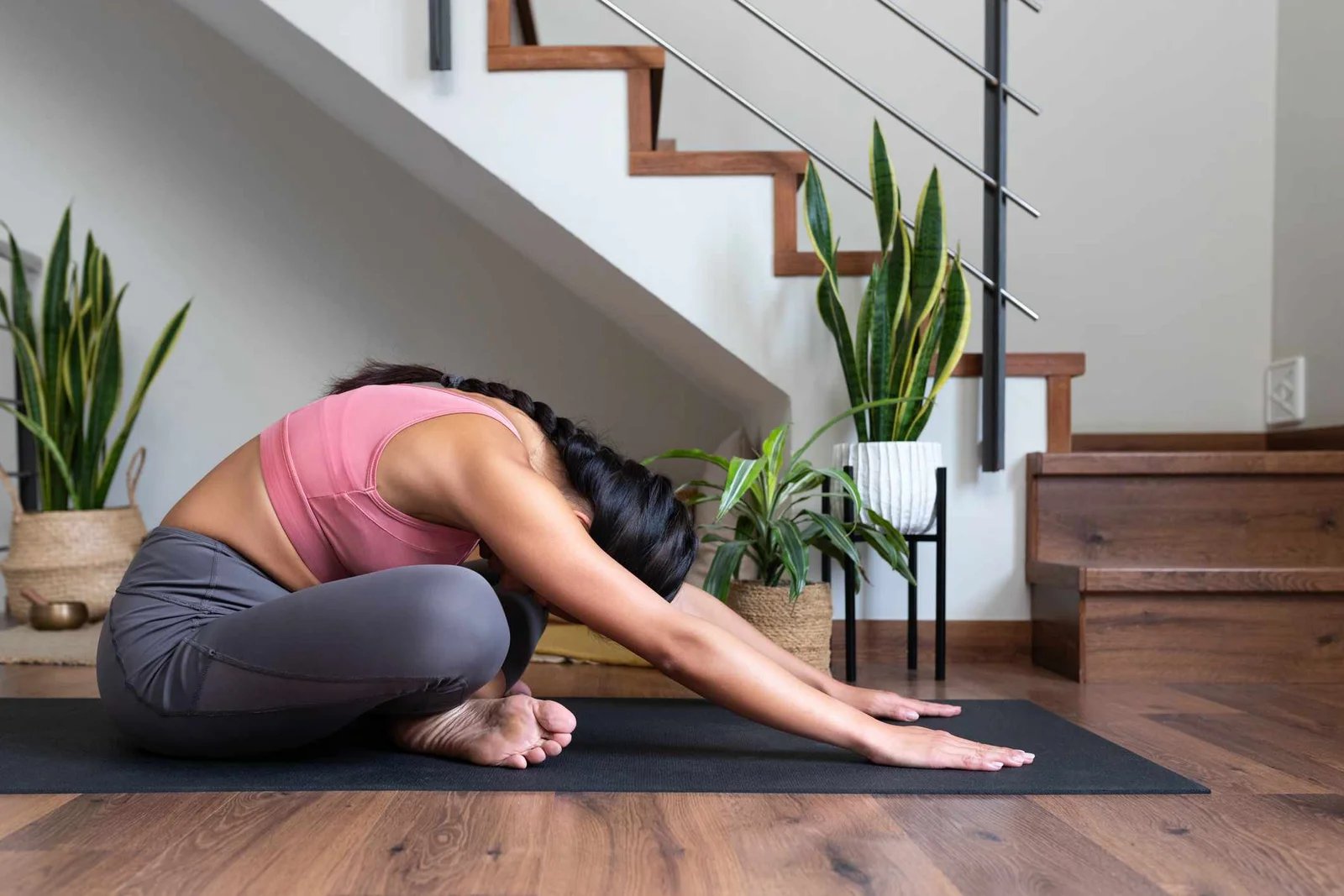
Most people will experience back pain at some point in life. Low back pain can result from several factors, including poor posture, overuse, stress, injuries, and health conditions.
Regular stretching can help improve posture, reduce muscle tension, and enhance blood flow. This can help reduce stiffness and discomfortincrease your range of motion, and prevent future injuries or flare-ups.
A classic stretch inspired by yoga, the downward dog targets your hamstrings, calves, and upper and lower back. It can help elongate your spine, providing tension relief. The position also activates your core and upper body, improving the function of your thoracic spine (the middle section connecting to your ribs).
Here’s how to do a downward dog:
- Start on your hands and knees, with your wrists directly under your shoulders and knees under your hips.
- Tuck your toes and lift your hips toward the sky, aiming to create an inverted V shape.
- Keep your hands about shoulder-width apart or slightly wider, and your feet hip-width apart, pressing your heels towards the floor to enhance the stretch.
- Pedal your feet one at a time to get comfortable in the stretch.
- Hold for 20-30 seconds, focusing on relaxing your neck and breathing deeply.
This stretch targets your lower back and hips to gently relieve tension in the lower back muscles. Hip tightness is often associated with back pain, and this stretch can help loosen your hips.
Here’s how to do the knee-to-chest stretch:
- Start on your back with your knees bent and feet flat on the floor.
- Pull one knee toward your chest if you can reach it, or use a yoga strap for more distance. Keep the other leg straight out on the ground.
- Hold the stretch for 30 seconds, keeping your back and shoulders relaxed.
- Repeat with the other leg.
This movement helps address tightness in the upper back. The rotation helps improve flexibility and relieve tension by gently increasing the range of motion of your spine. Make sure to keep your knees together when you twist to avoid putting pressure on your back.
Here’s how to do side lying rotations:
- Lie on your side with your knees bent at 90 degrees and your head on a pillow.
- Keeping your knees on the ground, slowly rotate your torso to open up the top half of your body.
- Move your arm straight out to the other side, gently turning your neck to look in the same direction.
- Hold for a second and then return to the starting position, completing multiple repetitions (reps).
- Switch sides.
Cat-cows alternate between two movements to target the entire back in a successive order. This can help improve the movement and flexibility of the spine. Imagine flexing and extending each vertebra at a time as you go through the sequence.
Here’s how to do cat-cows:
- Start on your hands and knees in a tabletop position.
- Inhale as you slowly arch your back into the ‘cow’ position.
- After a brief pause, exhale and slowly round your back, tucking your chin to your chest and drawing your belly button toward your spine into the ‘cat’ position.
- Repeat 5-10 slow repetitions.
Child’s pose is a stretch that targets your upper back, lower back, hips, and knees. It elongates your spinal muscles and helps release tension. You can increase the stretch in your upper back by elevating your hands on something in front of you.
Here’s how to do child’s pose:
- Start in a kneeling position with your feet pointed together and knees apart.
- Slowly sit back onto your heels and stretch your arms out in front of you as far as you can go, keeping your hands on the floor or on an elevated object.
- Rest your forehead on the ground or as close as you can.
- Stop and breathe deeply for 30 seconds to one minute before coming out of the stretch.
The seated spinal twist increases flexibility in the spine and relieves tightness in the lower back and hips. The rotation helps stretch the muscles along the spine while also promoting better mobility in your hips. It’s especially beneficial after sitting for long periods and helps maintain a healthy spine.
Here’s how to do the seated spinal twist:
- Sit on the floor and extend your legs in front of you, keeping your torso upright.
- Cross your right leg over your left, placing your right foot flat on the floor.
- Twist your torso to the right while you place your left elbow outside of your right knee to further the twist.
- Hold the twist for about 30 seconds and repeat on the other side.
The pelvic tilt breathing drill gently challenges both stability and mobility in one movement. Gently tilting the pelvis stretches tight lower back muscles, while exhaling engages your deep core muscles to stabilize your spine.
Here’s how to do the stretch:
- Lie flat on your back with your knees bent and feet flat on the floor.
- Take a deep inhale through your nose, and tilt your pelvis toward you so your belly button sinks down and your back goes flat on the ground.
- Exhale forcefully through your mouth to feel your core muscles engage.
- Inhale gently through just your nose, filling up your belly, and exhale again through the sequence.
Note: For a variation of this exercise, you can raise your legs onto a chair or raised surface in front of you so they are bent at about 90 degrees. Place a yoga block or pillow between your legs.
While stretches are beneficial for back pain, other methods like exercise and various therapies can also support the health of your lower back. Here are a few options:
- Exercise: Exercise can help alleviate and manage low back pain by decreasing pain signals and boosting overall mobility, stability, and strength. Be sure to start slow and focus on form to avoid injury.
- Complementary therapy: Therapeutic massage and chiropractic care can help reduce muscle tension, increase blood flow to the affected areas, and improve overall flexibility, providing relief from back pain. You can also use hot-cold therapy to relax your muscles and ease pain.
- Ergonomics: Adjust your workspace to promote good posture and support your back. Look for a desk chair with added lumbar support for your lower back.
- Medications: Ask your doctor about over-the-counter or prescription medication options to help manage pain and spasms.
When implementing any movement therapy, it’s always best to listen to your body and pay attention to pain signals. Experiment with what feels right and stop if you experience pain while doing a stretch or exercise. A personalized approach is always best; you can reach out to a personal trainer or healthcare professional for guidance.
Disclaimer: This news article has been republished exactly as it appeared on its original source, without any modification.
We do not take any responsibility for its content, which remains solely the responsibility of the original publisher.
Author: Jakob Roze, CSCS
Published on: 2025-10-15 01:00:00
Source: www.health.com
Disclaimer: This news article has been republished exactly as it appeared on its original source, without any modification.
We do not take any responsibility for its content, which remains solely the responsibility of the original publisher.
Author: uaetodaynews
Published on: 2025-10-14 21:25:00
Source: uaetodaynews.com
